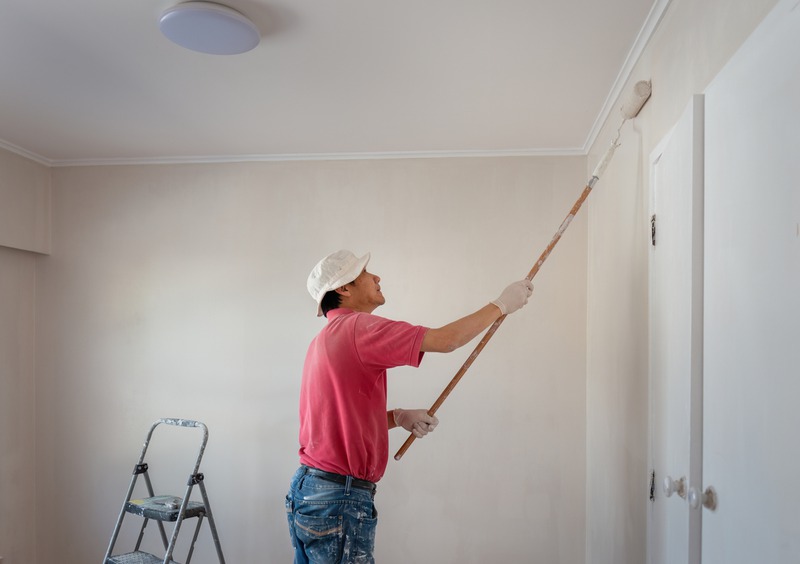Planning a painting project for your home can be exciting, but it can also be overwhelming if you’re unsure how to budget for it. Whether you’re sprucing up a single room or giving your entire house a fresh look, knowing the costs involved helps you plan better and avoid surprises. In this article, we’ll break down how to budget for professional painting services so you can make informed decisions and get the most out of your project.
How to Allocate Funds for Professional Painting
Budgeting for professional painting services involves several factors, including labor, materials, and the project size. Understanding these elements will help you estimate the total cost and stay within your budget.
Factors That Affect the Cost
The cost of professional painting services depends on a variety of factors. Here are some of the main elements to consider:
Size of the area to be painted: Larger spaces will naturally cost more to paint because they require more time and materials. For example, painting a whole house will be more expensive than painting a single room.
Type of paint: The quality and brand of paint can significantly impact the price. Premium paints tend to be more expensive, but they often offer better coverage and durability, which can save money in the long run.
Labor costs: Professional painters charge by the hour or per square foot, so labor is a significant part of the overall cost. The job’s complexity, such as painting high ceilings or intricate trim, can also affect labor costs.
Prep work: If your walls need repairs, sanding, or priming, this will add to the cost. Proper prep work is crucial for achieving a smooth, long-lasting finish.
Location: Prices can vary depending on where you live. Painting services in urban areas might be more expensive compared to smaller towns.
Get Multiple Quotes
To ensure you’re getting the best deal, gathering multiple quotes from different painting companies is a good idea. This gives you an idea of the average cost in your area and helps you compare services and find a painter who fits your budget. Be sure to ask for a detailed breakdown of what’s included in the quote, such as labor, materials, and prep work, so you know exactly what you’re paying for.
Deciding on the Scope of Your Project
Before hiring a professional painter, it’s essential to decide on your project’s scope. Are you painting a single room, multiple rooms, or the entire house? Do you need both interior and exterior painting? The larger the project, the more expensive it will be, so understanding the entire scope ahead of time helps with budgeting.
When working with professionals like Vork Brothers Interior Painting, it’s helpful to communicate your specific needs and budget. They can suggest ways to manage costs without compromising on quality.
How to Save Money on Professional Painting
While professional painting services can seem expensive, there are ways to reduce costs without sacrificing quality.
Choose the Right Paint
One way to save money is by choosing the right paint. High-quality paint may seem expensive upfront, but it often requires fewer coats and lasts longer, saving you money in the long run. If you’re working within a tight budget, look for a balance between price and quality.
Do Some Prep Work Yourself
You can also save money by doing some of the prep work yourself. Tasks like cleaning the walls, filling small holes, or removing old wallpaper can reduce the painter’s prep work time, lowering the overall cost.
Focus on High-Impact Areas
If you’re on a budget, focus on painting high-impact areas like the living room, kitchen, or entryway. Fresh paint will make the biggest difference in these spaces, and you can always paint other rooms later when your budget allows.
For areas like bathrooms, choosing the right paint to prevent moisture damage is essential. You can follow many bathroom painting tips to ensure your bathroom walls stay fresh and durable. Consulting a professional can help you decide on the best materials to use.
Planning for Additional Costs
In addition to the basic costs of materials and labor, there are often additional expenses that you’ll need to account for in your budget.
1. Unforeseen Repairs
Sometimes, unforeseen issues like mold, cracks, or damaged drywall can arise during the painting process. These issues must be addressed before painting can begin, adding to the cost. Setting aside a portion of your budget for unexpected repairs is a good idea.
2. Painting Accessories
If you’re handling any part of the project, you may need to purchase accessories like drop cloths, painter’s tape, and brushes. While these costs may seem small, they can add up, so include them in your budget.
3. Hiring a Quality Painter
Lastly, it’s important to remember that hiring a high-quality painter, like Vork Brothers, can sometimes cost more upfront but save you money in the long run. Experienced painters know how to avoid common pitfalls and will deliver a better finish, reducing the likelihood of needing touch-ups or repairs.
Wrapping It Up
Budgeting for professional painting services involves understanding the various factors that affect costs, such as labor, materials, and project size. By doing some prep work yourself, focusing on high-impact areas, and choosing the right paint, you can manage costs while still achieving great results. Gathering quotes from reputable painters will also help ensure you stay within your budget and receive high-quality service. While it may seem like a large investment, professional painting services can add value to your home and refresh your living space, making it well worth the cost.





